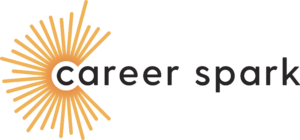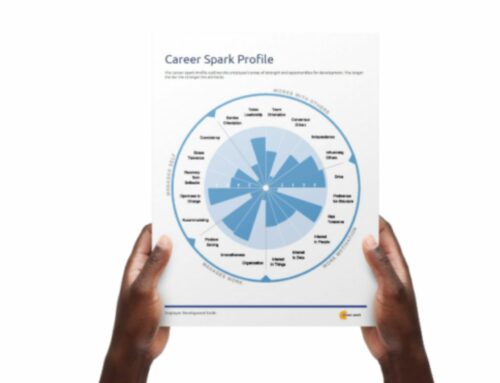Increased Churn

How to Handle Sudden Job Churn
We’re sure you’ve read the headlines and seen the polls. The press has even come up with some catchy nicknames: “The Great Resignation and the “Turnover Tsunami.”
Right now, people are thinking about quitting their jobs – and following through on it – more than ever before. 4 million Americans quit their jobs in April 2021. 3.6 million more people quit in May. And according to the 2021 Work Trend Index, 41% of the employees are thinking about leaving their jobs this year.
Naturally, this trend is throwing employers for a loop and in their panic, many are doing the opposite of what they should. For instance, you might think that the best way to handle a mass talent exodus is to ramp up your hiring or add more job perks, but this is short-sighted. In reality, the key to managing this trend (or avoiding getting swept up in it altogether) is to start with a simple question: “Why?” Why are people leaving, and why are people staying?
The Great Resignation may have come about on the heels of a global pandemic, but let’s get real – your employees aren’t leaving because of COVID-19. They’re leaving because of what the pandemic revealed. This time has led many of us to reevaluate what we want from our work and careers, and the stuff we might have put up with and swept under the rug pre-pandemic isn’t okay with us now.
So what’s a leader to do? This is certainly not an easy trend to face, but it’s also an exciting opportunity for a reset. If you’re not sure why people stay (or leave) your company, now’s the perfect time to find out – before it’s too late.
Communication and Transparency is the Key to Retention
It’s going to take a lot more than salary increases or unlimited vacation to keep your top talent from straying if they’re not happy. If you want people to stick around for the long haul, you need to understand what’s working (and what isn’t) for your current staff. If you don’t, then you might end up filling the same roles with the same types of people and ending up with, well, the same result – high turnover.
According to TechRepublic, some of the top reasons employees are quitting right now include:
- Difficulties with adjusting to remote work
- Lower motivation
- Uncertainty about returning to work in person
- Lower commitment to the organization
- Lack of career growth
- Fear that the company is not resilient enough to survive setbacks
- Lack of business stability, positive environment, or strong leadership
However, the specific reasons an employee may leave a company are dependent on specific job categories.
“At a more granular level, IT workers point to career growth as the main reason they want to explore other opportunities, while lack of business stability is driving software engineers to be open to a different job,” data scientist and talent economist Christy Petrosso told TechRepublic.
What this tells us is that if you want to avoid increased churn, you need to go straight to the source: your people.
Identify growth opportunities
Do you know what your top performers are looking for from their careers? What makes them feel valued and excited about working with you? In addition to 1:1 check-ins, investing in predictive career pathing software can allow your employees to map out their own career trajectories within your organization. Once you know exactly what type of growth they’re looking for, you can then automatically match them with the right learning opportunities or possibly even a different role or function that would be a better fit for them.
Recognize their skills and talents
We all want to feel appreciated – especially during these strange times – so making an effort to regularly recognize your employees’ efforts can go a long way in helping them feel more committed to your organization. Also, once you understand what success looks like in different roles, you can use this information to create the ideal blueprint for each position that you can leverage when hiring to attract more of the right people to your company.
Listen to their feedback
During this past year, you’ve probably had to do a lot of talking to your employees about everything from policy changes to remote work logistics. You also need to make sure that you’re listening. Employee surveys, polls, stay interviews, and mentorship opportunities are just a few of the tactics you can employ to create a more supportive environment and identify potential turnover triggers before they get out of hand.
Honesty is the best policy
One of the biggest reasons why good employees quit is poor job fit. Close to half of new employees fail within 18 months – a stat that should give any business owner the heebie-jeebies. When a new hire’s personality traits don’t line up with their job duties, you set them up to fail. While it’s possible to train and coach employees to help them adjust to the role, there’s only so much adapting and adjusting a person can do. Eventually, they’ll crack.
To improve your hiring hit rate, you need to be honest about what you need from your ideal candidate. For example, your job postings should include three key parts: the company mission, an explanation of challenges, and a promise of reward. By being upfront about a role’s pros and cons, candidates can decide for themselves if the benefits outweigh the risks.
Final Thoughts
The pandemic has given your employees a lot of time to think about what they want from their careers. They’re probably asking themselves questions like:
“Am I working for the right organization?”
“Am I in the right position?”
“Am I positioned for the future career I want?”
If the answer to any of these questions is ‘No,’ it’s possible that leaving your company is the right choice for them. But it’s also possible that the organizational issues they’re facing are only temporary, or they could make a lateral move to a different position within the company. The only way to truly know what the right move is for both parties is to understand what each side needs, and this is where predictive career pathing technology like Career Spark can come into play.
Ultimately, your employees just want to know that you care about them. Investing in a solution like Career Spark can make you a more empathetic employer by helping you understand your workforce on a deeper level and giving you the insights you need to make more strategic talent decisions.













